A land of contrasts, Wales encompasses stunning mountains, beautiful golden beaches and charming tiny villages all within a country that is 20,779 km² (8022 miles²). Famous for its hospitality, coast line and castles, it makes a great destination for a family holiday with the children, a romantic weekend away or a midweek break.
1. Caernarfon Castle
One of the most popular castles in Wales, Caernarfon is easily accessible by rail from Bangor station. A UNESCO World Heritage Site since 1986, the original 11th-century motte and bailey construction was replaced two centuries later by English king Edward I, who planned to use the castle as his palace. His son, Edward II was born at the castle in 1284 and was known as Edward of Caernarfon.
Caernarfon Castle and the city walls, which were added in the late 1200s by Edward I, have played many roles throughout the centuries, including as a prison in the Wars of Independence and the English Civil War, seat of Welsh rule, site of the investiture of several English kings and home to the Royal Welch Fusiliers Museum
- Location: Just 19 minutes from Llanfairpwll station
- Tickets from £7.80
- Caernarfon Castle Website
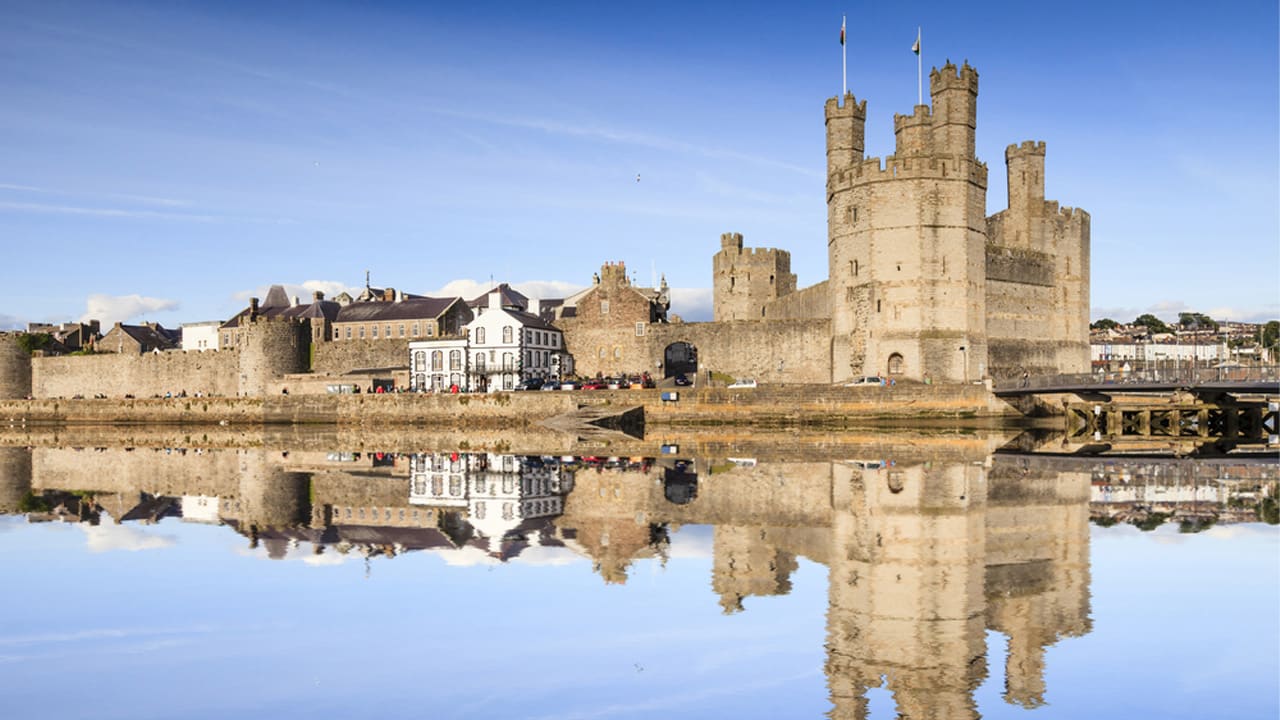
2. Eryri National Park
Attracting visitors from around the globe, Eryri National Park covers approximately 2,132 km² (825 miles²) of North Wales. Comprising of mountains, moorland and more than 100 natural lakes, it’s the home of the impressive Mount Yr Wyddfa. With the peak at 1,085 m (3560 ft), Yr Wyddfa challenges keen climbers and walkers to tackle its steep slopes when the Welsh weather allows it. But for the more leisurely tourist, the Yr Wyddfa Mountain Railway allows everyone to enjoy the panoramic view from the top.
Encompassing several villages, including the charming Betws-y-Coed and Beddgelert, Eryri has plenty of options for affordable places to stay. For the hardy, there are several campsites and hostels - some more ‘rustic’ than others and catering for the lovers of comfort, lots of cosy B&Bs and homely hotels exist.
- Location: Just 1 minute from Betws-y-Coed station
- Home of the tallest peak in Wales
- Eryri National Park Website
3. Hay-on-Wye
The charming town of Hay-on-Wye lies on the border between England and Wales and encompasses the best of both countries. Known locally as Hay, this is a magnet for book lovers and the town has almost two dozen bookstores. Selling both new and second-hand tomes, if you’re after something special, chances are it can be found on a shelf in Hay. Every spring the town’s population swells by over 80,000 as the Festival of Literature & Arts takes place. Since 1987 the festival has brought writers and readers from around the globe together to share ideas and imagination, and if you are a bibliophile, this is the place to be at the end of May.
- Explore the great outdoors
- Visit the reading capital of the world
- Hay on Wye Website
4. Tenby
A hugely popular holiday destination, the southwest town of Tenby benefits from two golden sandy beaches and is situated right on the Pembrokeshire Coastal Path. With charming houses painted in sugar almond pastels, and a maze of quaint, narrow streets, hiding artisanal boutiques around sharp corners, Tenby is a wonderfully relaxing place to explore. It is also a great base to experience all that Pembrokeshire has to offer including Folly Farm and Oakwood Theme Park. The railway station is situated in the heart of the town.
- Enjoy the best beach in the UK
- Lots to explore
- Steeped in ancient history
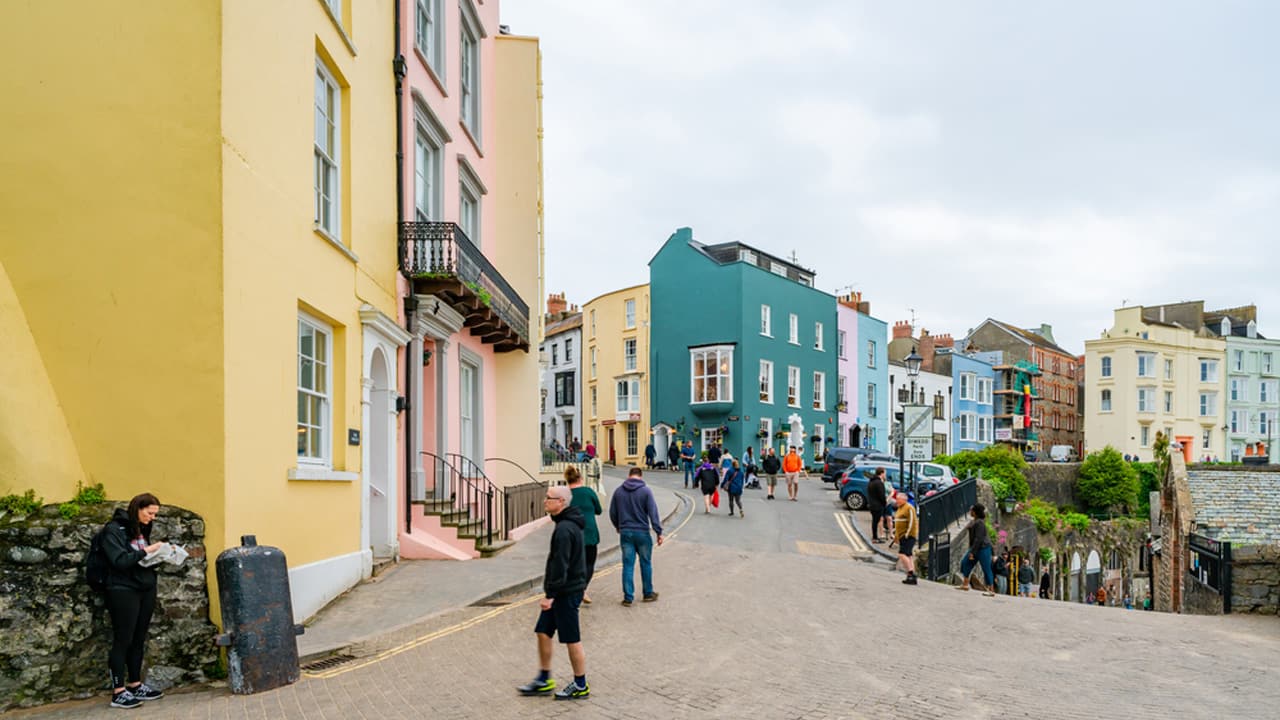
5. Cardiff
The country’s capital, Cardiff, offers a vast variety of activities for all ages, and is easily accessible by rail.
If you’re wanting to learn about Cardiff’s history then Cardiff Castle in the heart of the city centre is a good place to start. However, if retail is your thing, the beautiful Victorian arcades will keep you happy for hours. Full of independent boutiques, showcasing locally produced handicrafts and artisanal treasures, it’s a good idea to bring a strong bag or two.
The vibrant waterfront of Cardiff Bay is home to the Wales Millennium Centre, the iconic Norwegian Church Arts Centre and Mermaid Quay. If you want to relax and watch the world go by, one of the Quay’s many chic cafes or bars is just perfect.
With a richly diverse culture, and centuries of history to explore, Cardiff should be on every tourist’s map.
- Fun for all the family
- Shop till you drop
- Soak up the local culture
6. St David’s
On the edge of the rugged Pembrokeshire coast clings the UK’s smallest city, St David’s. With the 6th century monastery at the heart of the community, the settlement grew and the land was cultivated to feed both the inhabitants and the many pilgrims. A bigger and more impressive religious centre was designed around an imposing new cathedral in 1115, with Pope Callixtus II bestowing his papal privilege on the development. He decreed that instead of travelling to Rome - a somewhat dangerous undertaking, pilgrims should make their way to St David’s, and so the settlement enjoyed a very healthy economy for many centuries.
St David’s has plenty of cosy B and Bs, several boutique hotels and a range of restaurants, perfect for today’s visitors, and the cathedral, now owned by Cadw, is well worth a visit.
- The UK's smallest city
- Visit the 6th Century Cathedral
- Tickets: £5 voluntary donation
7. The Pembrokeshire Coast
Covering an area of around 629 km2 (243 miles2) the Pembrokeshire Coast National Park is comprised of a vastly varied landscape. Rugged cliffs battered by dramatic waves, beautiful sandy beaches, cool, wooded glens, and open windswept moorland all make up this unique coastal environment. Along with Eryri and the Bannau Brycheiniog, this is the third of Wales’ National Parks.
Attracted by the flora and fauna, much of which is rarely seen elsewhere, the park sees over seven million tourists annually, many of which enjoy walking the Pembrokeshire Coast Path. Choughs, skylarks and horseshoe bats can all be found along the cliffs, while dolphins, seals, turtles, basking and blue sharks and even orcas swim wild off the coast. Pembrokeshire is a wonderful place and one you’ll long to return to.
- Location: Just a short walk from Pembroke Dock Station
- Stunning national park
- Go dolphin, whale and orca spotting
8. Llandudno
As the largest holiday resort in Wales, the charming town of Llandudno nestles on the coast of North Wales, and has plenty to recommend it as a tourist destination.
The most visible attraction is, at the far end of the beach, the huge limestone headland of the Great Orme. With panoramic views from the summit 220 metres (700 ft) above, for an easy route, take the cable car to the peak, but keen walkers can take one of several tracks up. En route, look out for the gorgeous kestrels, and nimble Kashmir goats - the descendants of a pair gifted to Queen Victoria, that graze wild on the steep slopes.
Stretching away from the wide promenade is Llandudno’s pier. The longest in Wales, this Grade II listed structure is perfect for an afternoon stroll and a delicious cream tea. Why not finish your day with a spot of culture at the Venue Cymru theatre? With a packed season of performances, exhibitions and more, there’s bound to be something to entertain you.
- Climb the Great Orme
- Visit the longest pier in Wales
- Llandudno Website
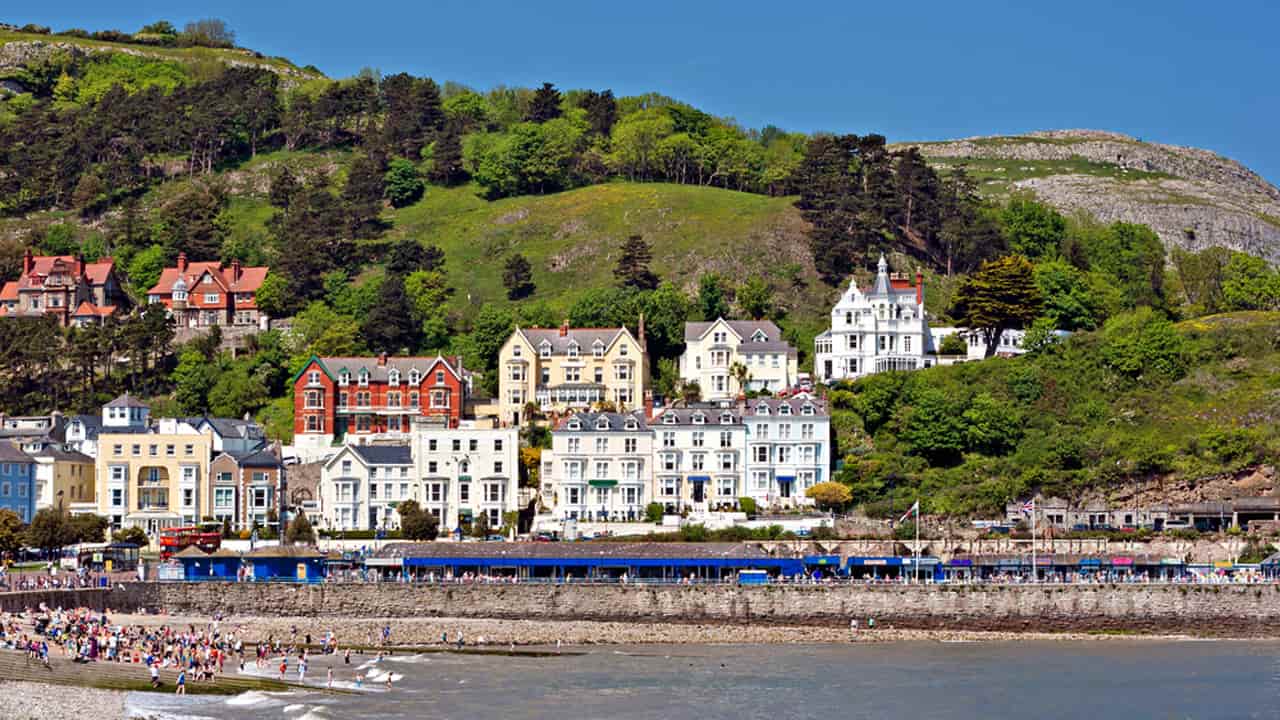
9. Porthmadog's Heritage Railway
Twisting through North Wales is the popular Welsh Highland Railway (WHR). This family-friendly attraction is a great experience for narrow-gauge train enthusiasts and the journey of more than 40 km (25 miles) takes you from Porthmadog to Caernarfon.
Run by keen volunteers, the service travels through the most beautiful countryside, such as the magical Aberglaslyn Pass, the charming village of Beddgelert and around the edge of the Bannau Brycheiniog National Park. For anyone who loves steam trains and railwayana, the Welsh Highland Railway is a unique adventure.
- Travel through some of Wales' most stunning scenery
- Fun for all the family
- Porthmadog's Heritage Railway Website
10. Aberystwyth
On the banks of the River Rheidol, the pretty town of Aberystwyth offers a wide range of activities and attractions for its visitors, which amount to around 250, 000 annually.
The grand promenade runs the length of this historic university town, and with the marina at one end and Constitution Hill watching over the other, the picture-perfect golden sandy beach is beautifully sheltered. Charming cafes spill out onto the street and are a great place to relax and unwind while watching the world go by.
With the 13th-century castle ruins to explore, a busy arts centre, and plenty of retail opportunities for shopaholics, Aberystwyth should feature on everyone’s must-see list particularly as the enchanting harbour town of Aberaeron is close by too.
- Boutique shopping
- Spend a day at the beach
- Fun for all the family
11. Conwy Castle
Conwy Castle is a mediaeval fortification located in the town of Conwy, on the north coast of Wales. It was built by Edward I, during his conquest of Wales, between 1283 and 1289. Today, the castle sits on a rocky outcrop overlooking the River Conwy.
The castle was used as a garrison for troops during the English Civil War in the 17th century, and it was partially destroyed. In the 19th century, the castle was bought by the British government and restored. It is now managed by Cadw, the Welsh heritage agency.
Conwy Castle is considered to be one of the finest examples of late 13th century military architecture in Europe, and it has been designated as a World Heritage Site by UNESCO.
- UNESCO Site
- Entry: From £7.80
- Train travellers can get 2 for 1 entry at Cadw sites
- Website: https://cadw.gov.wales/visit/places-to-visit/conwy-castle
12. Vale of Rheidol Railway
The Vale of Rheidol Railway is a heritage railway in Wales. The line runs for 11 miles from Aberystwyth to Devil's Bridge. It is the only steam railway in Wales and one of the oldest in Britain, having opened in 1902. The railway is currently operated by the Cambrian Railways Society.
The Vale of Rheidol Railway offers a unique experience, allowing visitors to step back in time and ride on vintage steam trains through some of Wales' most stunning scenery. The line runs through the scenic Rheidol Valley, past waterfalls and mountains, and offers spectacular views of the surrounding countryside.
If you're looking for a memorable day out, why not take a ride on the Vale of Rheidol Railway? It's an experience you won't forget.
- Family-Friendly
- Unique Experience
- Website: https://www.rheidolrailway.co.uk/
13. Bannau Brycheiniog
The Bannau Brycheiniog National Park is a protected area in Wales. It covers some of the most spectacular and beautiful scenery in southern Britain, and is home to an abundance of wildlife. The park was established in 1957, and covers an area of 520 square miles (1,342 km2).
The park offers a wide range of activities for visitors, including walking, climbing, cycling and horse riding. There are also numerous opportunities for wildlife watching, and the park is home to a number of rare and endangered species.
The Bannau Brycheiniog National Park is an important site for conservation, and is home to a number of important ecological habitats. These include ancient woodlands, heathland, wetlands and grasslands.
- Good for Nature
- Designated Area of Outstanding Natural Beauty
- Website: https://www.breconbeacons.org/
14. Great Orme Copper Mine, Llandudno
The Great Orme Copper Mines are a group of mines located in beautiful Llandudno, North Wales. These mines were once the largest copper mines in the world, and produced over two million tons of copper during their peak years of operation.
The Great Orme Copper Mines have a long and rich history, dating back to the Bronze Age. Archaeological evidence suggests that mining activity took place at the site as early as 2,000 BC.
The Great Orme Copper Mines were an important part of the local economy and provided many jobs for the people of Llandudno. The mines closed in the early 20th century, and today, the mines are a popular tourist attraction, and offer visitors a chance to see what life was like for the miners who worked there.
- Unique Adventure
- Historical
- Website: https://www.greatormemines.info/
15. St Fagans National Museum of History, Cardiff Area
The museum is located on the outskirts of Cardiff, and is made up of over 50 original buildings from different locations in Wales. This makes it the perfect place to get an insight into Welsh history. The buildings have been carefully re-built, so you can explore them at your leisure. You can also learn about traditional Welsh life, and how it has changed over time. There are plenty of interactive exhibits to keep you entertained, and the museum is suitable for all ages. Whether you're a history buff or just looking for a fun day out, St Fagans Museum is sure to impress.
- One for the history buffs
- Educational
- Website: https://museum.wales/stfagans/
16. The National Waterfront Museum, Swansea
The Waterfront Museum in Swansea is a great place to learn about the city's maritime history. Visitors can see how Swansea was once a major port for trade and transportation, and how its waterfront has changed over the years. The museum also has interactive exhibits that teach about the local environment and wildlife. This is sure to be a wonderful day out.
- Gorgeous Marina
- Welsh Cultural History
- Website: https://museum.wales/swansea/
17. Plantasia Tropical Zoo
Looking to get up close and personal with a variety of animals and plants? Look no further than Plantasia Tropical Zoo. This fully immersive adventure comprises two climate-controlled zones - tropical rainforest and arid - containing approximately 5000 different plants. Palms, bromeliads, orchids and giant bamboos recreate the real rainforest, complete with water features containing terrifying red-bellied piranha, and colourful koi. So come on down and explore the wonders of nature at Plantasia Tropical Zoo today.
- Unique Adventure
- Train travellers get 20% off Entry
- Website: https://www.plantasiaswansea.co.uk/
18. Secret Owl Garden
At The Secret Owl Garden in Haverfordwest, Pembrokeshire, you can get up close and personal with some of the most magnificent birds of prey in Wales. With over 20 different species of owl, you're sure to find your new favourite feathered friend.
The knowledgeable staff at The Secret Owl Garden are passionate about these beautiful creatures and are always on hand to answer any questions you may have. They also offer a variety of hands-on experiences, such as the chance to fly a hawk or take an owl for a walk.
Whether you're a bird enthusiast or just looking for a unique day out, The Secret Owl Garden is sure to delight visitors of all ages. So why not pay them a visit today?
- Relaxing Day Out
- Fun for all ages
19. Powis Castle and Garden
This wouldn’t be an epic list of things to do in Wales without yet another incredible castle on the list. Powis Castle and Garden is a National Trust property in Powys, Wales. The castle has been inhabited since the 11th century and was originally known as Castell Coch, or Red Castle. It was rebuilt in the 13th century and became known as Powis Castle.
The gardens at Powis Castle are world-renowned and feature a number of rare and exotic plants. They include a terraced garden, an Italianate garden and a formal French-style garden. There is also a 12th-century walled garden, which is the oldest surviving garden in Wales.
Powis Castle is open to the public and attracts visitors from all over the world. It is also a popular venue for weddings and other events, making this a must-see destination for all.
- Family-Friendly
- National Trust Gem
- Website: https://www.nationaltrust.org.uk/powis-castle-and-garden
20. Barry Island Pleasure Park
Barry Island Pleasure Park is a historic amusement park located in Barry, Wales. The park first opened in 1895 and was one of the first of its kind in the United Kingdom. Throughout its history, the park has been known for its iconic rides and attractions, as well as its beautiful setting on the Welsh coast.
Today, Barry Island Pleasure Park remains a popular destination for visitors from all over the world. The park is home to a variety of rides and attractions, including a rollercoaster, carousel, Ferris wheel, and more. Visitors can also enjoy a variety of food and drink options at the park's many restaurants and cafes.
Whether you're looking for a fun day out with the family or a romantic evening by the sea, Barry Island Pleasure Park is the perfect place to visit.
- Seaside Location
- Family Fun Day
- Website: https://www.barryislandpleasurepark.wales/
20 Interesting Facts About Wales
1. Wales is Home to the Smallest Cathedral City in the World
With a population of just 2,000, St David’s in Pembrokeshire, Wales, is the smallest cathedral city in the world. It’s also the only city in Britain that lies entirely within a national park.
2. Wales is the Land of Castles
Did you know that Wales has more castles per square mile than any other country in the world? That's right - this tiny country is absolutely packed with over 600 castles.
3. Saint Patrick of Ireland Came From Wales
Saint Patrick may be the patron saint of Ireland, but he was actually Welsh. A resident of Banwen in the Dulais Valley, he was apparently taken to Ireland by Irish slave traders before he became a missionary.
4. Wales is Home to One of The Longest Place Names in The World
Llanfairpwllgwyngyllgogerychwyrndrobwyll-llantysiliogogogoch is a small town in north Wales. It is best known for its long name, which translates as ‘The church of St Mary in the hollow of white hazel trees near the rapid whirlpool by St. Tysilio’s of the red cave’.
5. Why Wales is Called Wales
Wales is the English name for the country, with the Anglo Saxon meaning of 'foreigner' or 'outsider'. The Welsh name for the country, however, 'Cymru' means 'friends'.
6. Cymraeg is The Oldest Language in Britain
The Welsh language is the oldest language in Britain, said to date back around 4,000 years. It is a Celtic language, closely related to Cornish and Breton.
7. Yr Wyddfa is The Highest Mountain in Wales
There are many ways to enjoy Eryri National Park, but one of the most popular is to hike to the top of Wales' highest mountain, Yr Wyddfa. Standing at 1,085 metres (6,560 feet) tall, Yr Wyddfa is an impressive sight, and the views from the summit are simply stunning.
8. There Are More Sheep Than People in Wales
The people of Wales are known for their friendly nature and their love of sheep. In fact, there are nearly 10 million sheep in Wales, which is more than three times the human population. The Welsh countryside is dotted with the fluffy things.
9. The Father of The NHS Was Welsh
Bevin was a Welsh trade unionist and politician who served as Minister of Labour in the British government from 1940 to 1945. He was one of the founders of the National Health Service, and served as its first Deputy Chairman. Born in Tredegar, Wales.
10. The Vikings Sold The People of Wales
The Welsh were sold into slavery by the Vikings, who raided the country in the 9th and 10th centuries. The Welsh were taken to Ireland and other parts of Scandinavia, where they were forced to work as labourers or servants. Many of them eventually managed to escape and return to Wales.
11. Wales has an Italian Village
Portmeirion is a unique village in the country of Gwynedd, Wales. It is a picturesque and whimsical enclave that feels more like Italy than Wales. With its colorful buildings, lush gardens, and Mediterranean atmosphere, Portmeirion is truly a one-off destination.
12. The National Symbols of Wales Are The Leek and The Daffodil
The leek is one of the emblems of St. David, the patron saint of Wales. According to legend, he had Welsh soldiers wear leeks in their hats during a battle to identify them as allies. Leek in Welsh is Cenhinen, which is often confused with the Welsh for daffodil, Cenhinen Pedr, translated as "Peter's Leek". Eventually, the daffodil became the second symbol of Wales.
13. The Red Dragon is the National Animal of Wales
The dragon is a popular symbol in Welsh culture, appearing on the national flag and in many traditional tales. Dragons are often seen as fierce and dangerous creatures, but they can also be protective and benevolent. In Welsh mythology, the red dragon is said to represent Wales itself, and is thought to be a symbol of strength and power.
14. Welsh Rarebit Does Not Contain Rabbit
Welsh rarebit is a traditional Welsh dish made with a cheese-based sauce. The sauce is typically made with cheddar cheese, milk, and beer, and is then spread over bread or toast. Sometimes other ingredients such as mustard, Worcestershire sauce, or egg are added to the sauce. Welsh rarebit has been around for centuries and is thought to date back to the 18th century. The dish gained popularity in the Victorian era.
15. Wales Has Celtic Roots
Welsh culture has its roots in Celtic traditions and was once part of the Roman Empire. In the Middle Ages, Wales was ruled by Norman knights and was conquered by England in 1282. The Welsh language is a branch of the Celtic language family, and is spoken by around 20% of the population of Wales.
16. Roald Dahl Was Welsh
In 1916, the famous writer Roald Dahl was born in Llandaff, Wales. He quickly developed a strong interest in nature, and his family soon moved to the countryside. Although Dahl never returned to live in Wales after his family left in 1927, his love for the countryside endured. In his later years, Dahl often visited Wales and continued to be inspired by its natural beauty.
17. Wales Has Seven Cities
There are seven cities in Wales: Cardiff, Newport, Swansea, Bangor, St Davids, St Asaph and Wrexham. Cardiff is the capital city of Wales and has a population of around 363,000. It is located on the South East coast.
18. Wales Built the World's First Suspension Bridge
The Menai Bridge was the first suspension bridge in the world built to carry heavy traffic. Designed by Thomas Telford, it opened on 30 January 1826 and measures 386m (1,265 ft). The bridge spans the Menai Strait between Anglesey and mainland Wales. It is considered an engineering masterpiece and a key landmark in British history.
19. Wales has 923 miles of Mainline Railway Track
Wales has a long history of railways, with the first line opening in 1807. Since then, the railway network has grown to cover 923 miles (1,485 km) of mainline track. Today, trains are an important part of life in Wales, providing links between cities and towns and connecting Wales to the rest of the UK.
20. Cardiff is The Capital City of Wales
Cardiff is the perfect place to enjoy all that Wales has to offer. From its stunning coastline and rolling hills to its lively nightlife and medieval castle, there is something for everyone in this vibrant city. Whether you're looking to explore the great outdoors or enjoy some world-class shopping, Cardiff has it all. And with so much to see and do, you'll never be bored in this vibrant Welsh capital.
-
Visit Cardiff Explore Visit Cardiff
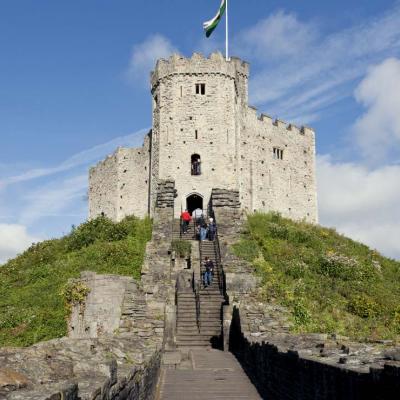
-
Visit Chester Explore Visit Chester
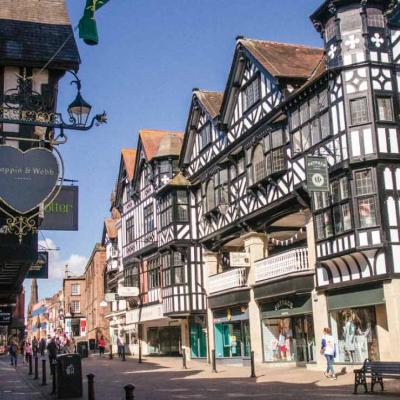
-
Visiting Manchester Explore Visiting Manchester
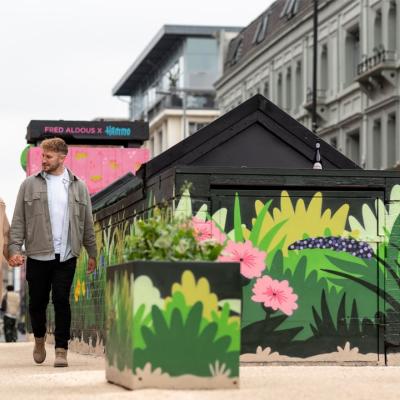
-



